RT in Guantanamo: What they would not let us see
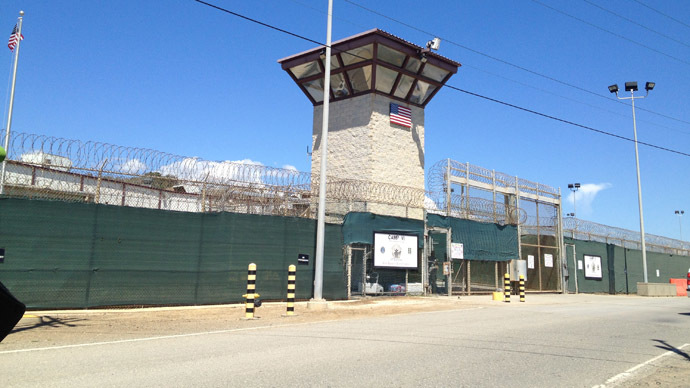
RT's Anastasia Churkina travels to the military base housing America's most scandalous prison, and discovers a powerful cover-up machine.
The flight to Guantanamo from Fort Lauderdale in Florida was the only one in my life that was leaving from a public airport without any indication of it on the departures board. A handful of folks gathered at the gate. A few gloomy and tired-looking soldiers – young ones, early 20s - and staff members a lot less excited than us, they’d obviously been to this largely hidden place dozens of times before.
I don’t know if it was our excitement creating the sense of secrecy in our heads, but when a Duty Free lady asked me where we were flying to, and I said “Guantanamo”, her response was “Oh, Bahamas – yes?” with a perky smile on her face. I nodded. And thus the cover-ups began.
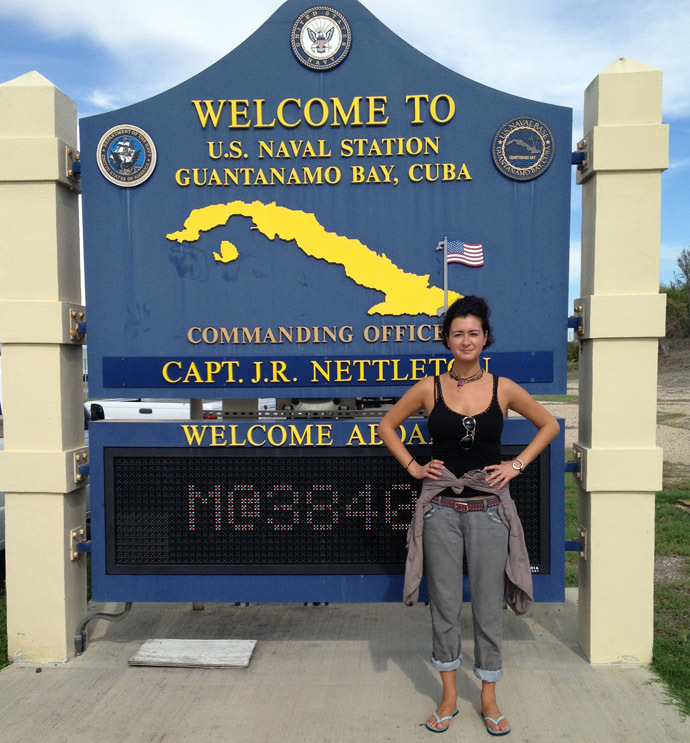
When most of us think or hear of Guantanamo without having seen it for ourselves, we imagine a dark eerie place, barbed wire, gates that close but don’t open, orange jumpsuits with inmates’ hands cuffed behind their backs, torture, hunger strikes and force-feeding. Images built up over a period of more than a decade now of America’s prisoners of the war on terror. But the fact is, US officials who are behind the camp set-up work super-hard to make sure no controversy is witnessed by journalists who visit, or even discussed with anyone working at the base in any open way. Guantanamo staff do all they can to make sure journalists witness this one as something that has nothing to do with the place that’s been notoriously scandalizing the U.S. human rights record since 2002.
None of the interviews set up for us on the ground by the Guantanamo media team are accidental. It’s either experienced officials who’ve learned to excessively underplay any allegations against Guantanamo - or staff that were just recently deployed here, so a common answer to questions about torture allegations & force feeding is often “I only came here a month ago”.
Journalists’ schedules are written out in advance to the last detail before setting foot here. A several page document outlining what’s allowed and what’s banned is signed before being approved for a visit. We saw kitchens where food is prepared for both detainees & soldiers, the local library, the fantastic sporting facilities put in place for the military working here, a big open-air movie theatre and so on. But what we - and I’d assume most people interested in when it comes to this place - the actual life of detainees and their real stories - were kept away from us.

Visits to the two active camps we were taken to were so quick that when they ended we said to ourselves: “Hold on, that’s it?!” Officials, asking to remain anonymous and keeping us from filming their faces, would briefly show us around empty cells prepared in advance for media visits, all packed with clean pyjamas, new books, hygiene necessities, pre-selected literature and tiny bottles of shampoos called “Maximum Security”. (I asked if this was a joke or if this shampoo was actually any different to the regular stuff. The staff said they didn’t know, but agreed that it was a bit of a silly name).
Looking at the supposed elements of prisoner life displayed by detention camp staff, it is impossible to know if it has anything to do with the way prisoners actually spend their time locked up here. Despite multiple requests, we were not allowed more than a minute-long glimpse at one detainee through a dark-glass window. We were shocked that this would be all we get to see.
Despite our requests to at least witness more, not even film on camera, we were told we were already being shown more than enough, and that our schedules were too packed for anything else. A high-ranking official told us that they don’t want detainees to be treated as “some curiosity”. And so we would go on another tour to a local radio station, for example, that has nothing to do with the detention facility itself.
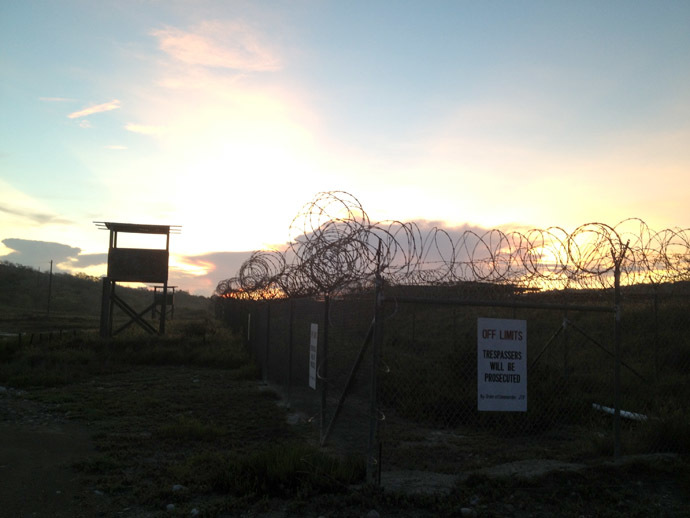
The backdrop of the scandalous prison is unexpected. Guantanamo Bay is a fantastic tropical location. It’s in the Caribbean, after all, so why should it look any different than, say, the Bahamas or Bermuda? It doesn’t. And it’s certainly not filled with endless prison camps and America’s enemy combatants escorted by guards.
The military base was leased by the U.S. Government way before George Bush and his buddies thought up the modern-day concept of America’s war on terror. The base has been leased since 1903 (over a century ago). Curiously, under the contract with the Cubans, the U.S. pays a monthly rent of just over $4,500 to be able to use this 45-square-mile territory. The Cubans have actually been refusing to accept the cash for decades, but have not been able to make the Americans leave. According to the initial agreement, the lease can’t be terminated unless both sides agree to it. This has obviously been very convenient for the U.S.
The Guantanamo military base itself is very much like any U.S. college campus. Soldiers and visitors like us stay in simple dorm-like structures – mostly in pairs. Those who are deployed here for 6-9 months come by themselves and have to share space with a roommate of the same sex. Those who have to re-locate here for 2-3 years, mostly higher-ranking male military officials, bring their families.
Because we never had time to ourselves between shoots, and even had our meals with our military escort team, which is focused on accompanying the media everywhere – I had quite a bit of time to ask them about how this kind of job has affected their personal lives. One of the lower-ranking sergeants, a young lady recently deployed here, told me soldiers are allowed to date each other, but only within their ranks – not higher up.

Speaking of the military personnel working here, the ones who work with the media at least and several of those specially designated to be able to speak with journalists, are far from your stereotypical detention facility employee. Charming young people (most of them in late 20s or early 30s), full of dreams, optimism, and goals for the future. When we ask them about Guantanamo having had a terrible impact on the U.S. human rights record, most of them tell us they don’t think about it. They are here to do a job. Most of them also say they’ve never witnessed anything controversial personally and don’t know anyone who has.
Often times, we could tell that some answers to the questions we were asking the military personnel working here were not exactly the truth, but rather an official response they’ve learned to give. Work is work, I guess.
Something like this might be a common conversation:
- “Are we OK to move about the island by ourselves?”
- “Sure! You guys can do whatever you want!”
- “We’d like to have dinner by ourselves tonight at that food joint next to our lodging area”.
- “Sounds good. But do you mind if Ben comes with you? He hasn’t had dinner yet.”
- “Mmm… Suuuure.”
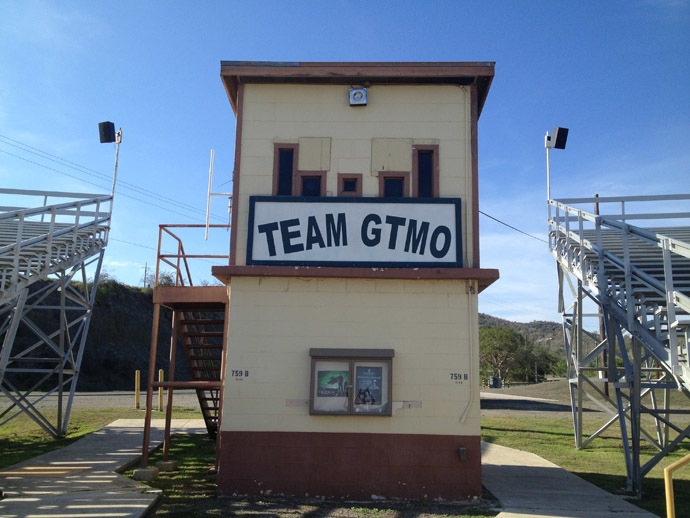
Ben – without his military uniform – drives us to dinner, sits with us at the table, doesn’t speak much. When we ask him if he’s going to order anything, he says he’s already eaten.
We’re told that there is constantly someone in the lobby of our lodging area – 24/7 – just in case we might need anything. We soon realize this is not to make sure we can get a donut in the middle of the night if we crave one (a request that would no doubt be accommodated, were it to arise, because everyone is very friendly and accommodating with visiting journalists) – but to make sure we don’t leave the hotel unattended to roam the military base by ourselves. It’s worth noting here that the actual detention camps holding the prisoners are too far for us to be able to reach on foot with camera equipment anyway. But even if we did manage to get there unaccompanied, the camps are so well protected that any hopes of getting extra material would have been futile.
Myself and my cameraman Nick soon agree that one of the most exhausting aspects of our 4-day trip (2 full days on the ground & 2 travel days) are not the 5 am starts or the 12-hour filming schedules in close to 40-degrees Celsius heat, but the constant company of our escort team.
Again, great guys, but we’ve never worked like this anywhere else - every step watched, every shot observed. At the end of each work day, the media team examines absolutely all and any material gathered - video, audio, photos, and even sketches - and deletes anything that is deemed to be a violation of security.

One of the five series of our reports focuses specifically on regulations of how exactly journalists are asked to conduct themselves on the ground, so I won’t go into much of this here. If you watch the stories, you’ll see that there is only one local resident whose face we were permitted to film. All the other locals – from store keepers to joggers to young Moms with baby carriages – revealing their identities in any sort of way was out of the question. But when speaking to anyone living at the base – they say they just love it here, and there’s really nothing to hide or to be afraid of.
Officials running Guantanamo speak proudly of the entertainment they have available for detainees: plenty of books in a dozen of languages, DVDs, video games, magazines that detainees are allowed to request. All of these are carefully censored before they make it to the prisoners; library workers make sure nothing extreme – from violence to sexuality – makes it into their hands. It’s as if all of these sources of entertainment can cover up the fact that most of the prisoners held here are spending an indefinite amount of time without any charges - just waiting for something that never happens.
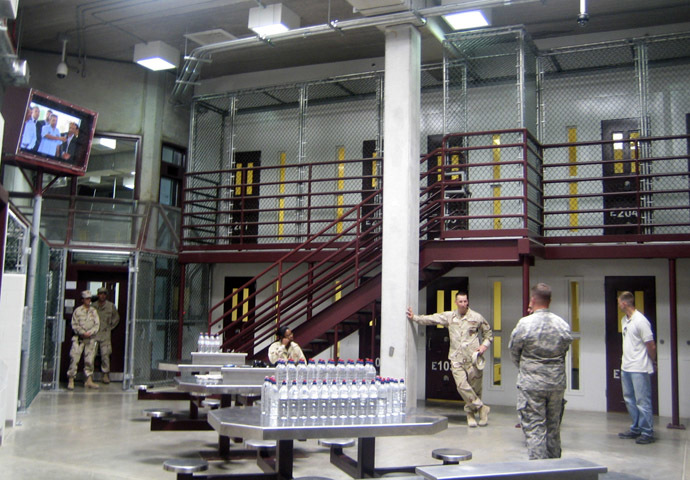
In the meantime, the servicemen at the base don’t have access to too much information. Most importantly, there is barely any internet access at Guantanamo, and even if there was, the US military at the base are banned from looking at certain websites like WikiLeaks, for example. To them, something classified is always classified, even though the information released by WikiLeaks has long been made public.
I wonder if the servicemen end up seeking this information before or after their deployments, or if remaining in the dark is more convenient for them.
Since 2002, the Guantanamo detention facilities have held a total of 779 prisoners. The majority of these alleged enemy combatants were released without ever being charged. 164 remain behind Guantanamo bars, more than half of them are long cleared for release or transfer. Only 6 detainees are currently on trial - in just 2 ongoing cases. Everyone else is just waiting. Every single day without knowing what will happen to them next and how much longer they’ll have to stay here.
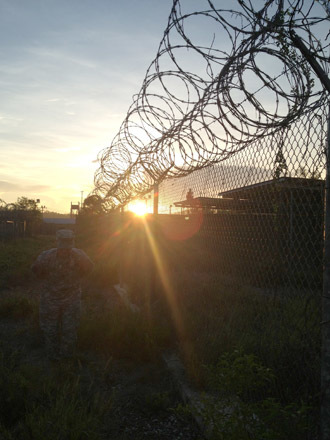
One lawyer working with prisoners held at Guantanamo told us there’s nothing the detainees would love more than to be able to share their stories with journalists, to be able to talk about their struggles openly and inform the world what really goes on. This is impossible, however, because not one detainee - while still at these detention facilities - has ever been permitted to speak with a journalist. They can pass any message along only through their lawyers, or else they have to wait until they leave to tell their stories.
Even though the Obama administration has been mostly quiet in recent years about Guantanamo, most likely due to failing to move forward in shutting these camps down, the long hunger strike earlier this year brought the world’s attention back to the prison. But when the mass protest stopped - public conversation on closing this place died away again. Meanwhile, there are detainees at Guantanamo who have been on hunger strike for literally years, being force fed daily. Gitmo officials say it’s their way to get media attention. Whatever the reasons behind it, hunger strikes here lead to a painful and unethical procedure (according to many prominent medical associations) of having a tube pushed through a nostril down to your stomach.
Still, Guantanamo officials pretend to never have heard of the criticisms, telling us that the most they’ve heard “from patients” is that “it’s uncomfortable”. My inquiry about the possibility of being force fed on camera to prove this was declined.
The official excuse for not closing the detention camps at Guantanamo - as Obama promised on literally Day 1 of taking office - which the White House cites, is that Congress is resisting this move. Countless legal experts we’ve spoken to, however, say that all it would take is Presidential willpower. If Barack Obama really wanted Guantanamo shut down, it would close today. But even then, “out of sight - out of mind” might not apply here: after more than a decade of marring America’s image with this questionable chapter in modern history, the concept of Guantanamo could stick around to haunt Washington for many years to come.
RT's International Correspondent Anastasia Churkina
The statements, views and opinions expressed in this column are solely those of the author and do not necessarily represent those of RT.
The statements, views and opinions expressed in this column are solely those of the author and do not necessarily represent those of RT.












